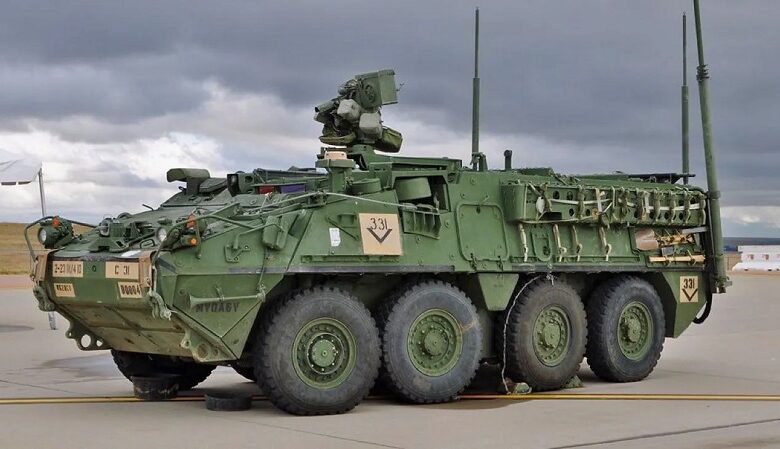Indian Army Prepares for Stryker Armoured Vehicle Trials Amidst Modernization Efforts

The Indian Army is gearing up to conduct trials of the US-manufactured Stryker armoured infantry combat vehicles in the challenging terrains of deserts and the high-altitude region of Ladakh. This move comes as part of India’s efforts to modernize its mechanized infantry forces with advanced technology.
Sources within the defence establishment have confirmed that the Army plans to procure approximately 530 infantry combat vehicles (ICVs). Discussions regarding the Stryker vehicles began last year as part of the US-India Initiative on Critical and Emerging Technologies (iCET), with the decision solidified during talks between US National Security Adviser Jake Sullivan and India’s NSA Ajit Doval.
The Stryker, developed by General Dynamics Land Systems, was chosen due to Indian vendors’ inability to meet the qualitative requirements (QR) set forth by the Army. Although the Stryker offers advanced capabilities, it also presents certain limitations, notably its lack of amphibious capability and the need for customization to suit high-altitude environments like eastern Ladakh.
The procurement aims to replace the aging Russian-origin BMP-2 vehicles currently in service with the mechanized infantry battalions of the Indian Army. Of the 50 mechanized infantry battalions, the focus will primarily be on equipping 10 battalions dedicated to reconnaissance and support with these new ICVs.
Previously, the Army issued a Request for Proposal (RFP) over fifteen years ago, receiving responses from 15 vendors, none of whom could fully meet the requirements. If India finalizes the procurement of Strykers, it will initially involve a limited off-the-shelf purchase through the US’s foreign military sales (FMS) initiative, followed by joint production in India via a joint venture. This approach will allow India to customize the vehicles according to its specific operational needs.
The decision-making process includes a comprehensive analysis of technical capabilities such as mobility, terrain negotiation, troop protection, and lethality parameters across various conditions. It also involves evaluating the potential for co-development with Indian defence stakeholders, aiming to integrate critical technologies like the Javelin anti-tank guided missiles (ATGMs) into the Stryker platform.
Regarding other indigenous developments like the wheeled armoured platforms (WhAP) by Tata and DRDO, sources clarify that these platforms serve different roles. Unlike ICVs, WhAP focuses primarily on troop transport and lacks essential features such as firepower and advanced fire-control systems necessary for effective combat operations.
Additionally, the Army is also in the process of formulating a Request for Information (RFI) for the procurement of 105 wheeled armoured personnel carriers (APCs) designed for reconnaissance and support roles.
As India progresses with its defence modernization agenda, the trials and potential induction of Stryker vehicles mark a significant step towards enhancing operational capabilities and strengthening the country’s defence infrastructure against evolving security challenges.






